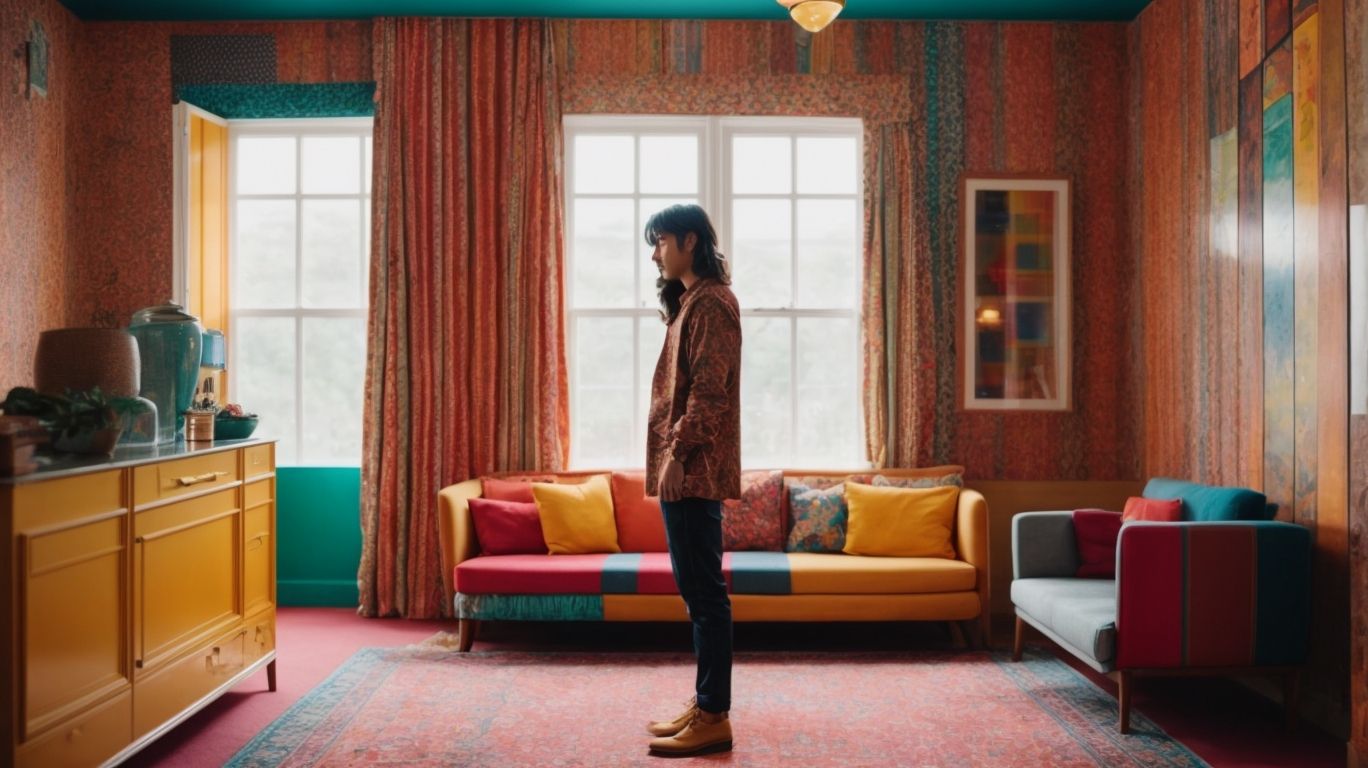Design psychology is a fascinating field that delves into the impact of design on our psychology. From the colors we choose to the layout of a space, every aspect of design has the potential to influence our emotions, behavior, and mental well-being.
In this article, we will explore the factors that contribute to design psychology, including the role of color, the impact of lighting, and the importance of layout and organization.
We will also discuss the connection between design and mental health, and how design interventions can be used to improve well-being in mental health settings. Whether you’re a designer, a psychologist, or simply someone interested in the power of design, this article is sure to provide valuable insights.
Contents
- 1 Key Takeaways:
- 2 What Is Design Psychology?
- 3 How Does Design Affect Our Psychology?
- 4 The Role of Color in Design Psychology
- 5 The Impact of Lighting on Design Psychology
- 6 The Importance of Layout and Organization in Design Psychology
- 7 The Connection Between Design and Mental Health
- 8 Frequently Asked Questions
- 8.1 What is design psychology and why is it important?
- 8.2 How does design psychology differ from traditional psychology?
- 8.3 What are some practical applications of design psychology?
- 8.4 What are some key principles of design psychology?
- 8.5 How can design psychology benefit individuals and society as a whole?
- 8.6 Are there any ethical considerations in design psychology?
Key Takeaways:
- Design can have a significant impact on our psychology, influencing our emotions, behavior, and mental wellbeing.
- Color and lighting are important factors in design psychology, as they can evoke different emotions and affect mood and productivity.
- The layout and organization of a space can also have a significant impact on our mental clarity and focus, and utilizing design principles can promote positive psychology.
What Is Design Psychology?
Design psychology, also known as UX design psychology, refers to the study and application of psychological principles and human behavior to create human-centered products and experiences.
This approach involves understanding the cognitive and emotional responses of users, influencing their perceptions, emotions, and behaviors. By blending insights from psychology and visual communication, designers can create interfaces that resonate with users on a deeper level.
For instance, the use of color psychology in Apple’s product designs, such as the calming effect of blue in their interfaces, showcases the application of design psychology. Renowned designers like Don Norman have emphasized the significance of psychological considerations in design, illustrating their impact through products that prioritize user experience.
How Does Design Affect Our Psychology?
Design exerts a profound impact on our psychology, influencing cognitive load, shaping mental models, and crafting memorable experiences that align with human-centered design principles.
Research shows that design elements such as color, typography, and layout can significantly impact people’s cognition and emotional responses.
For instance, certain colors can evoke specific emotions, influencing how users interpret and interact with a product or interface.
The arrangement of information and visual hierarchy within a design can influence users’ mental models, affecting how they comprehend and navigate through a website or application.
This understanding of the cognitive and psychological effects of design is fundamental to creating intuitive and user-friendly experiences, enhancing engagement and satisfaction.
What Factors Contribute to Design Psychology?
Several key factors contribute to design psychology, including Hick’s Law, Miller’s Law, Jakob’s Law, chunking, ethical considerations, and the establishment of effective visual hierarchies.
These concepts have a significant impact on shaping user experience and influencing design decisions. Hick’s Law emphasizes the relationship between the number of choices and the time it takes to make a decision, highlighting the importance of simplicity and reducing cognitive load.
Miller’s Law deals with the limits of human information processing, underscoring the significance of organizing content into digestible bits to enhance comprehension and retention. Meanwhile, Jakob’s Law emphasizes familiarity, suggesting that users prefer interfaces that align with their previous experiences.
Chunking involves breaking down information into smaller units to facilitate easier processing, while ethical considerations ensure that designs respect user privacy and well-being. Establishing visual hierarchies is essential for guiding user attention and prioritizing content effectively.
The Role of Color in Design Psychology
Color theory plays a pivotal role in design psychology, influencing user experiences, visual communication, and the application of Gestalt concepts to create cohesive and engaging designs.
Colors have the ability to evoke specific emotions and responses, impacting how individuals perceive and interact with a design. This is evident in the way warm colors like red and yellow can elicit feelings of energy and excitement, while cool colors such as blue and green tend to convey calmness and tranquility.
In the realm of visual communication, the strategic use of color can guide the viewer’s attention, highlight important elements, and establish visual hierarchy within a design.
What Emotions Do Different Colors Evoke?
Understanding the emotional impact of different colors is essential for designers and psychologists, as colors evoke distinct emotions and perceptions in users, shaping their experiences and interactions.
For instance, the color red is often associated with passion, energy, and excitement. It can stimulate appetite and grab attention, making it a popular choice in the food industry for branding and packaging.
Conversely, blue tends to convey calmness, trust, and reliability, often utilized by financial institutions and healthcare organizations to establish a sense of security and professionalism.
The use of yellow can elicit feelings of optimism and happiness, commonly seen in children’s products or to promote a sense of warmth and positivity.
How Can Color Be Used to Influence Behavior?
Color, when strategically employed, can significantly influence user behavior and cognitive processing, aligning with the principles of design psychology to enhance the overall UX.
Understanding the psychological impact of color choices is paramount for UX designers. For instance, warm colors like red and orange can evoke a sense of urgency and drive action, making them ideal for call-to-action buttons.
On the other hand, cooler tones such as blue and green are often associated with trust and tranquility, making them suitable for trust-building elements like security badges or financial institutions’ websites.
The Impact of Lighting on Design Psychology
Lighting exerts a profound impact on design psychology, influencing mood, productivity, and the ambiance of different spaces, thereby shaping user experiences and interactions.
For instance, in residential interiors, the use of warm, soft lighting can create a cozy and inviting atmosphere, promoting relaxation and comfort.
On the other hand, in commercial settings such as offices, bright and cool lighting is often preferred to enhance alertness and focus, thus increasing productivity.
Research studies have demonstrated the ability of natural light to regulate circadian rhythms, leading to improved sleep patterns and overall well-being.
The strategic placement and intensity of lighting fixtures can accentuate architectural features, direct attention, and influence spatial perceptions, adding depth and character to the environment.
How Does Lighting Affect Mood and Productivity?
The impact of lighting on mood and productivity is a critical aspect of design psychology, as different lighting conditions can influence users’ psychological states and work efficiency, thereby contributing to the overall design experience.
Research has shown that lighting can significantly affect people’s mood. Bright, natural light often promotes a positive and energetic mindset, while dim or harsh lighting may lead to feelings of fatigue and low motivation.
The color temperature of lighting plays a crucial role in impacting human emotions. Warm tones create a cozy and soothing atmosphere, whereas cooler tones can evoke a sense of alertness and focus. The interplay of light and shadow in the environment can also influence the perceived spaciousness and comfort, thus affecting the overall user experience.
By understanding these psychological effects of lighting, designers can strategically utilize lighting design to enhance the functionality and ambiance of a space. This can ultimately elevate the well-being and performance of its occupants.
What Types of Lighting Should Be Used in Different Spaces?
Choosing the appropriate types of lighting for different spaces is crucial in design psychology, as it influences the ambiance, functionality, and user experiences within each environment.
For instance, the use of LED lighting in offices and workspaces has become increasingly popular due to its energy efficiency and ability to mimic natural light, which can positively impact productivity and well-being.
On the other hand, warm, dimmable ambient lighting is often favored in restaurants and lounges, creating a cozy and intimate atmosphere for patrons.
In residential settings, proper task lighting in areas like kitchens and study spaces ensures optimal functionality and comfort.
The choice of lighting can truly transform a space, elevating it from mundane to exceptional.
The Importance of Layout and Organization in Design Psychology
The layout and organization of design elements play a pivotal role in design psychology, shaping mental clarity, focus, and the application of design principles to facilitate positive user experiences.
Proper layout and organization can significantly impact the user’s cognitive processes, guiding them through the visual hierarchy to prioritize information and actions.
For instance, a well-organized website layout with clear navigation and logical content flow can reduce cognitive load, allowing users to focus on their goals and tasks with ease.
Case studies have shown that businesses with intuitive and thoughtfully designed physical store layouts can influence customers’ emotions and behaviors, leading to increased sales and brand loyalty.
By strategically placing products and creating visually appealing displays, organizations can enhance the overall shopping experience, leveraging design psychology to their advantage.
How Can Layout and Organization Impact Mental Clarity and Focus?
The meticulous layout and organization of design elements can significantly impact users’ mental clarity and focus, aligning with the principles of design psychology to enhance the overall user experience.
Design elements, such as typography, color schemes, and white space, play a crucial role in creating an intuitive and visually engaging layout. By carefully arranging these elements, designers can guide users’ attention and streamline the consumption of information, ensuring that the interface is easy to navigate and comprehend.
A well-structured layout minimizes cognitive load by presenting content in a logical order, leading to improved understanding and retention of information.
For instance, the implementation of grid systems in web design fosters consistency and coherence, reinforcing the visual hierarchy and improving the overall user experience.
What Are Some Design Principles to Promote Positive Psychology?
Implementing design principles that promote positive psychology is a foundational aspect of design psychology, as it enhances the overall UX and fosters favorable user experiences.
Positive psychology, an influential field within behavioral science, underscores the significance of integrating design elements that facilitate emotional well-being and flourishing.
The utilization of color psychology exemplifies this, as it can elicit specific emotions and impact mood. For instance, warm colors like red and orange can evoke feelings of energy and enthusiasm, while cool colors like blue and green may promote relaxation and calm.
By leveraging color psychology in UI/UX design, a digital platform can evoke desired emotional responses, contributing to a more positive user experience.
The Connection Between Design and Mental Health
The intricate connection between design and mental health underscores the potential for design interventions to positively impact human behavior and psychological well-being.
Design has a profound influence on individuals’ emotions, cognition, and behavior, shaping their overall experience and well-being.
For instance, the strategic layout and calming color palettes in healthcare facilities have been shown to reduce stress and anxiety among patients, promoting a conducive healing environment.
In urban planning, incorporating green spaces and recreational areas can enhance community mental health by fostering social interactions and physical activity.
Studies have also emphasized the significance of ergonomics in workspace design. Optimized ergonomic furniture and spatial organization can mitigate physical strain and enhance comfort, consequently bolstering employee productivity and satisfaction.
The integration of natural elements and daylight in architecture has been found to positively impact mood and cognitive function, contributing to a more harmonious living and working environment.
How Can Design Be Used to Improve Mental Health?
Design serves as a powerful tool to improve mental health, as thoughtful interventions and human-centered approaches can positively influence behavior and well-being.
By integrating elements such as natural lighting, soothing color schemes, and ergonomic furniture, interior design can create a calming environment that promotes relaxation and reduces stress.
In urban planning, incorporating green spaces and pedestrian-friendly infrastructure can foster community engagement and encourage physical activity, thus contributing to overall mental well-being.
The use of inclusive design principles in architecture and public spaces ensures accessibility for individuals with varying cognitive and physical abilities, enabling a more supportive environment for all.
What Are Some Examples of Design Interventions in Mental Health Settings?
Several compelling examples of design interventions in mental health settings showcase the transformative potential of design in positively influencing human behavior and well-being.
These design interventions encompass a broad spectrum of elements, from the layouts and color schemes of therapy rooms to the architectural features of psychiatric facilities.
For instance, a study conducted at a psychiatric hospital demonstrated that the implementation of nature-inspired elements, such as natural light, green spaces, and biophilic designs, significantly reduced patients’ anxiety and enhanced their overall mental well-being.
Similarly, the incorporation of sensory calming rooms equipped with soothing soundscapes and tactile materials has been shown to mitigate stress and agitation among individuals with various psychiatric conditions.
The strategic use of familiar and comforting interior design elements in mental health facilities, such as artwork, comfortable furniture, and personalized spaces, can foster a sense of security and promote a therapeutic environment for patients.
The deployment of evidence-based design principles, informed by rigorous research and user feedback, has led to the creation of mental health settings that are not only aesthetically pleasing but also conducive to healing and recovery.
These examples underscore how design interventions can profoundly impact human behavior and psychological well-being in mental health contexts.
Frequently Asked Questions
What is design psychology and why is it important?
Design psychology is the study of how our surroundings impact our emotions, behaviors, and overall well-being. It is important because our environment has a significant influence on our mental and emotional state, and understanding this can help us create more functional and supportive spaces.
How does design psychology differ from traditional psychology?
While traditional psychology focuses on the individual and their internal thoughts and emotions, design psychology looks at the external factors that shape our behavior. It takes into consideration elements such as lighting, color, and spatial layout to understand how our environment affects us.
What are some practical applications of design psychology?
Design psychology can be applied to various settings, such as homes, offices, schools, and public spaces. It can inform interior design, architecture, urban planning, and product design to create spaces that promote wellbeing, productivity, and overall satisfaction.
What are some key principles of design psychology?
Some key principles of design psychology include creating spaces that are functional, aesthetically pleasing, and reflective of the needs and preferences of the individuals who will use them. It also emphasizes the importance of incorporating elements that promote relaxation, comfort, and positive emotions.
How can design psychology benefit individuals and society as a whole?
By understanding how design influences our thoughts and behaviors, we can create spaces that support mental and emotional well-being, improve productivity and creativity, and foster positive social interactions. This can ultimately contribute to a healthier, happier, and more harmonious society.
Are there any ethical considerations in design psychology?
Yes, like any psychological practice, design psychology should be conducted ethically and responsibly. This includes respecting the privacy and autonomy of individuals, avoiding manipulation or coercion, and considering the potential impact of design on vulnerable populations.




